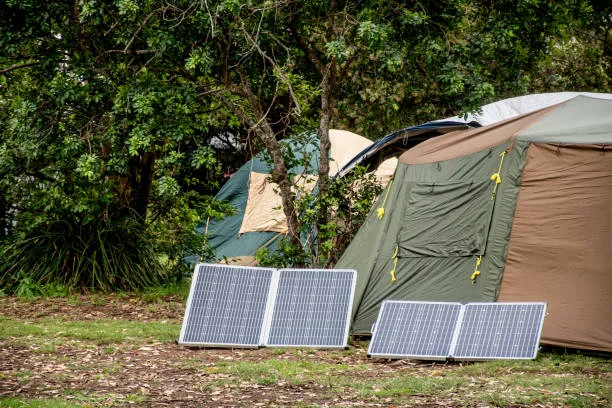Buying your first portable solar blanket Australia without doing proper research is like gambling with your money – you might get lucky, but you’ll probably end up disappointed and out of pocket. The portable solar market is flooded with cheap imports that promise the world but deliver frustrating performance when you actually need power in remote locations. Understanding the technical specifications, real-world performance differences, and compatibility issues can save you from expensive mistakes that many first-time buyers make.
Believing Inflated Wattage Claims
The biggest mistake people make is trusting the wattage numbers printed on solar blanket packaging. Many manufacturers list theoretical peak power output under perfect laboratory conditions that never exist in real camping situations. A blanket claiming 200 watts might only produce 120-140 watts under actual Australian sun conditions, even on perfectly clear days.
The problem gets worse with cheap panels using outdated solar cell technology. Older polycrystalline cells lose efficiency rapidly as temperatures rise above 25°C. In Australian conditions where panel surface temperatures can exceed 65°C, these panels might deliver only 60% of their rated output. Monocrystalline cells handle heat better but cost more upfront.
Look for panels with certified power output ratings from independent testing labs, not just manufacturer claims. The Clean Energy Council in Australia maintains databases of tested solar equipment, including portable panels, with verified performance specifications.
Read our featured post for exclusive tips and strategies you’ll value now.
Ignoring Controller Compatibility Issues
Many people buy solar blankets without considering how they’ll connect to their existing battery systems. Not all charge controllers work efficiently with folding solar panels, particularly MPPT controllers that need consistent input voltages to operate optimally.
Cheaper solar blankets often come with basic PWM controllers that waste significant power compared to MPPT systems. On a 120-watt panel, the difference can be 20-30 watts of lost charging capacity – that’s substantial when you’re trying to keep fridges running off-grid.
Some solar blankets have built-in charge controllers that can’t be bypassed, forcing you to use inferior charging technology even if you have better controllers in your setup. This becomes expensive when you want to expand your solar capacity later.
Overlooking Durability in Australian Conditions
Australian camping is brutal on equipment. Dust storms, extreme temperatures, and rough transport conditions destroy poorly built solar panels quickly. Many imported panels use thin backing materials that crack after a few folding cycles, causing permanent performance degradation.
The fold hinges are particularly vulnerable points. Cheap panels use basic fabric hinges that wear through after 50-100 folding cycles. Quality panels use reinforced polymer hinges designed for thousands of operations. This difference becomes critical when you’re setting up and packing down regularly during extended trips.
Corner grommets and attachment points also fail frequently on budget panels. Look for stainless steel grommets and reinforced stitching around stress points. Panels that tear loose from their tie-down points in wind become expensive projectiles that can damage vehicles or other camping equipment.
Choosing Wrong Size for Actual Needs
People consistently underestimate their actual power requirements and buy inadequately sized solar systems. A 100-watt panel sounds substantial until you realize a 12V fridge draws 40-60 watts continuously during hot weather. Add LED lighting, phone charging, and water pump operation, and you need significantly more capacity.
The math gets complicated because solar panels only produce peak power for 4-6 hours daily, even in sunny conditions. A 200-watt panel might generate 800-1200 watt-hours per day under ideal conditions, but cloudy weather can reduce this by 70% or more.
Consider your camping style too. Weekend warriors can get away with smaller systems because they’re not dependent on solar for extended periods. Long-term travelers need oversized systems to handle multiple cloudy days without running batteries flat.
Falling for Marketing Gimmicks
Flexible panels seem attractive because they’re lightweight and can conform to curved surfaces, but they generally produce less power per dollar than rigid panels. The thin-film solar cells used in flexible panels are less efficient and degrade faster than crystalline cells in rigid panels.
“Military grade” and “aerospace technology” are meaningless marketing terms when applied to consumer solar equipment. Real military solar equipment costs thousands of dollars and uses specialized components not found in camping gear.
Some manufacturers promote “advanced polymer” construction as superior to traditional materials, but this often just means cheaper plastic components that don’t last as long as properly designed aluminum frames and tempered glass surfaces.
Ignoring Warranty and Support Issues
Many cheap solar blankets come with impressive-sounding warranties that become worthless when you need them. Companies that sell through online marketplaces often disappear after a year or two, leaving customers with no recourse for failed equipment.
Local dealer networks matter for warranty service and replacement parts. Panels that need to be shipped to overseas manufacturers for warranty claims often cost more in shipping than replacement value.
Expand your knowledge—explore more resources curated for curious minds.






